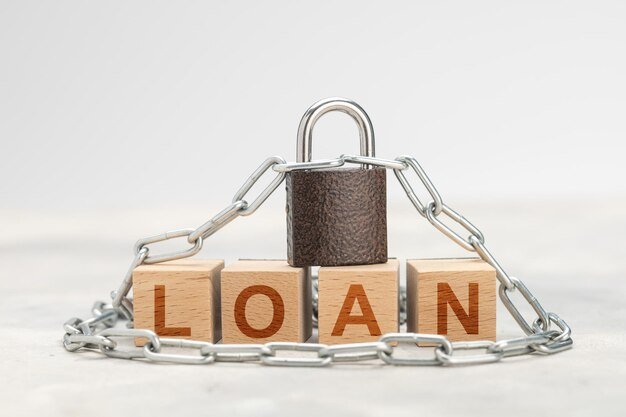Avoiding Loan Traps : Taking out a loan can be a smart way to achieve financial goals, whether it’s purchasing a home, funding education, or consolidating debt. However, it’s essential to remain cautious, as there are numerous lending traps that can lead to long-term financial distress. While loans can be incredibly useful, they can also be riddled with hidden risks that often go unnoticed in the excitement of securing funds. Below, we highlight the key red flags you should watch out for when considering a loan.
1. Sky-High Interest Rates
The first sign of a potentially predatory loan is the interest rate. Some lenders, especially payday loan companies and other non-traditional lenders, may offer loans with outrageously high-interest rates. These rates can lead to a cycle of debt that becomes nearly impossible to escape. Make sure to compare interest rates across various lenders and be cautious of those offering loans with interest rates far higher than the average.
2. Unclear Terms and Hidden Fees
Loan agreements should be transparent. If a lender is not clear about the terms of the loan or tries to obscure important information, it is a major red flag. Hidden fees, such as application fees, early repayment penalties, and loan servicing fees, can add up quickly, making the loan much more expensive than initially expected. Always read the fine print and ask questions if something seems unclear or suspicious.

3. No Credit Check
A legitimate lender will usually perform a credit check to determine your ability to repay the loan. However, some predatory lenders may offer loans without checking your credit history, promising easy approval without considering your ability to repay. While this may sound appealing, it can lead to borrowing more money than you can realistically afford, causing financial strain later on.
4. Pressure to Borrow More
Some lenders try to pressure borrowers into taking out more money than they need or can afford to repay. This is particularly common with payday loans, where the borrower is encouraged to borrow more funds than required or given a loan that far exceeds their financial needs. Borrowing more than you need is a surefire way to land in a debt trap, so avoid any lender who encourages you to take out a larger loan than necessary.
5. Vague or Aggressive Repayment Plans
A reputable lender will offer clear, structured repayment plans, including the loan term, the repayment schedule, and any other necessary details. If the lender provides vague information or pressures you into signing quickly without clearly explaining the repayment process, this is a major warning sign. Loans that are difficult to repay due to unclear terms can cause severe long-term consequences.
6. No Physical Address or Contact Information
Legitimate lenders will have a physical address and verifiable contact information. If a lender refuses to provide this or only offers vague details, such as an email or a phone number that doesn’t seem reliable, it’s a clear warning. Scammers and fraudsters often hide behind fake websites and anonymous contact methods, so be wary of any loan provider that lacks transparency.
7. No Clear Loan Purpose
If a lender doesn’t ask why you need the loan or doesn’t consider your financial situation, it could be a sign of a problematic loan. Lenders who don’t take the time to understand your financial needs or goals may not have your best interest at heart, potentially leading you down a dangerous financial path.

Conclusion
While loans can be essential for achieving financial goals, it’s crucial to stay vigilant and recognize the signs of predatory lending practices. Always do thorough research, read the fine print, and never rush into a loan agreement. By being aware of these red flags, you can avoid falling into a loan trap and maintain financial stability.
Also Read : What Can You Use An Unsecured Personal Loan For?
FAQs
Q1: What is the typical interest rate for a personal loan?
A: The typical interest rate for a personal loan ranges from 6% to 36%, depending on factors like credit score and the lender. Always compare rates to ensure you’re getting a fair deal.
Q2: How do I know if a lender is legitimate?
A: Check if the lender is registered with the appropriate regulatory body, has a physical address, and offers clear terms. If in doubt, consult consumer protection agencies.
Q3: Can I get a loan with bad credit?
A: Yes, but it often comes with higher interest rates and stricter terms. Some lenders specialize in bad-credit loans, but it’s important to carefully assess whether you can afford repayment.
Q4: Are payday loans safe?
A: Payday loans are often considered predatory due to their extremely high-interest rates and short repayment terms. It’s best to avoid them if possible.
Q5: What should I do if I can’t repay my loan?
A: If you’re struggling to repay a loan, contact your lender immediately to discuss options like loan extensions, refinancing, or a payment plan adjustment.





